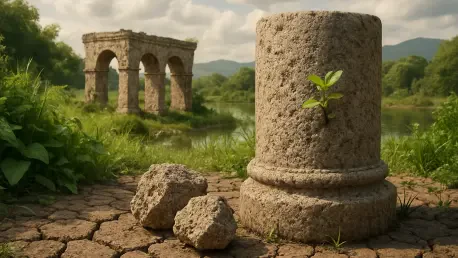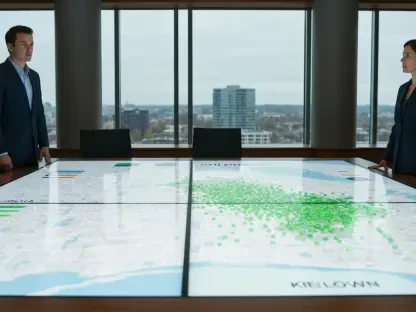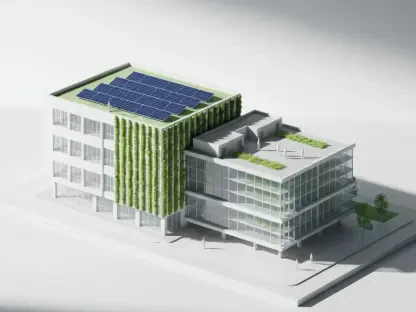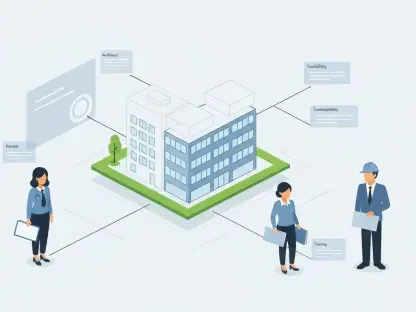Imagine a world where the towering structures of modern cities are built to last thousands of years, just like the ancient Roman aqueducts and bridges that still stand as testaments to a bygone era. The construction industry, a cornerstone of global development, faces an urgent challenge: concrete, the most widely used building material, is responsible for a significant portion of global carbon emissions. As the push for sustainability intensifies, researchers are turning to history for answers, specifically to the durable and seemingly eco-friendly concrete of ancient Rome. A groundbreaking study by experts from Universidad del Norte, UC Davis, and UC Berkeley, published in the journal iScience, delves into whether these time-tested methods can address today’s environmental crises. This exploration raises critical questions about balancing durability, emissions, and modern needs, setting the stage for a deeper look into how ancient wisdom might reshape sustainable building practices in a world desperate for greener solutions.
Unveiling Ancient Techniques for Modern Challenges
The composition of Roman concrete offers a fascinating contrast to modern formulations, sparking interest in its potential for sustainable applications. Unlike today’s concrete, which combines cement, sand, gravel, and water, the Roman version incorporated limestone, volcanic ash known as pozzolan, and recycled rubble. Both rely on limestone heated at high temperatures to produce calcium oxide for binding, a process that releases substantial carbon dioxide. Recent research, however, reveals a sobering reality: producing Roman concrete with current technology does not significantly cut energy use or emissions compared to contemporary methods. In certain cases, emissions might even edge slightly higher due to inefficiencies in adapting ancient recipes to modern production. This finding challenges the notion that historical techniques are inherently greener, pushing the conversation toward a more nuanced understanding of sustainability that goes beyond just the production phase and considers broader environmental impacts over time.
Beyond immediate emissions, the real promise of Roman concrete lies in its remarkable durability and reduced secondary pollutants. Structures built by the Romans have endured for millennia, a stark contrast to modern concrete’s lifespan, often limited by issues like corrosion of steel reinforcements. The ancient mix results in drastically lower levels of harmful pollutants such as nitrogen oxide and sulfur oxide, with reductions ranging from 11 to 98 percent depending on whether renewable or fossil fuel energy sources are used. Lead author Daniela Martinez from Universidad del Norte emphasizes that longer-lasting structures mean fewer repairs or rebuilds, which translates to reduced long-term environmental costs. This durability factor shifts the focus from short-term production impacts to the overarching benefits of extended service life, suggesting that ancient methods could inspire strategies to lessen the construction industry’s ecological footprint through resilience rather than just emission cuts.
Balancing Historical Wisdom with Contemporary Needs
Direct comparisons between Roman and modern concrete reveal complexities that temper enthusiasm for a straightforward adoption of ancient methods. Modern concrete, in use for roughly two centuries, often incorporates steel reinforcement bars that are prone to corrosion, a leading cause of structural failure. Roman concrete, free of such reinforcements, sidesteps this issue, but this structural difference complicates performance assessments. Co-author Paulo Monteiro of UC Berkeley stresses the importance of accounting for these distinctions to ensure accurate evaluations. The challenge lies in adapting historical techniques to meet today’s safety and design standards while retaining their environmental advantages. This nuanced perspective highlights the need for careful analysis and innovation to bridge the gap between past practices and present demands, ensuring that any application of Roman methods is both practical and effective in modern contexts.
While immediate reductions in carbon emissions may not be achievable through Roman concrete formulations, the potential for inspiring sustainable strategies remains significant. Researchers argue for a broader definition of sustainability that prioritizes not just production impacts but also material lifespan and pollutant output. Co-author Sabbie Miller of UC Davis points out that extending the service life of concrete structures can significantly decrease the demand for new materials, thereby curbing ecological harm over decades. The research team is committed to testing these ancient recipes in real-world scenarios to better understand their practical benefits and limitations. Such efforts aim to integrate the strengths of Roman techniques with modern innovations, creating a hybrid approach that could address pressing climate challenges in the built environment while respecting the unique constraints of contemporary construction practices.
Paving the Way for a Durable Future
Reflecting on the journey of exploring Roman concrete, it becomes evident that this ancient material offers more than just a nostalgic glimpse into history. Its ability to drastically cut harmful pollutants and withstand the test of time provides critical lessons for an industry under pressure to mitigate environmental damage. The research conducted by experts across multiple institutions underscores that while carbon emission reductions are not immediate, the long-term benefits of durability reshape how sustainability is perceived. By focusing on fewer rebuilds and less waste, the construction sector gains a model for resilience that complements modern goals. This exploration highlights a balanced approach, blending empirical data with a vision for lasting infrastructure that prioritizes ecological harmony.
Looking ahead, the path forward involves a commitment to merging historical insights with cutting-edge technology to redefine sustainable building. Continued testing of Roman concrete in practical settings promises to uncover actionable solutions, potentially transforming how materials are selected and used. Encouraging collaboration between historians, engineers, and environmental scientists could yield innovative hybrids that honor ancient durability while meeting today’s standards. As the construction industry seeks to lessen its environmental toll, these steps offer hope for structures that endure for generations, minimizing ecological costs through a thoughtful fusion of past and present ingenuity.









